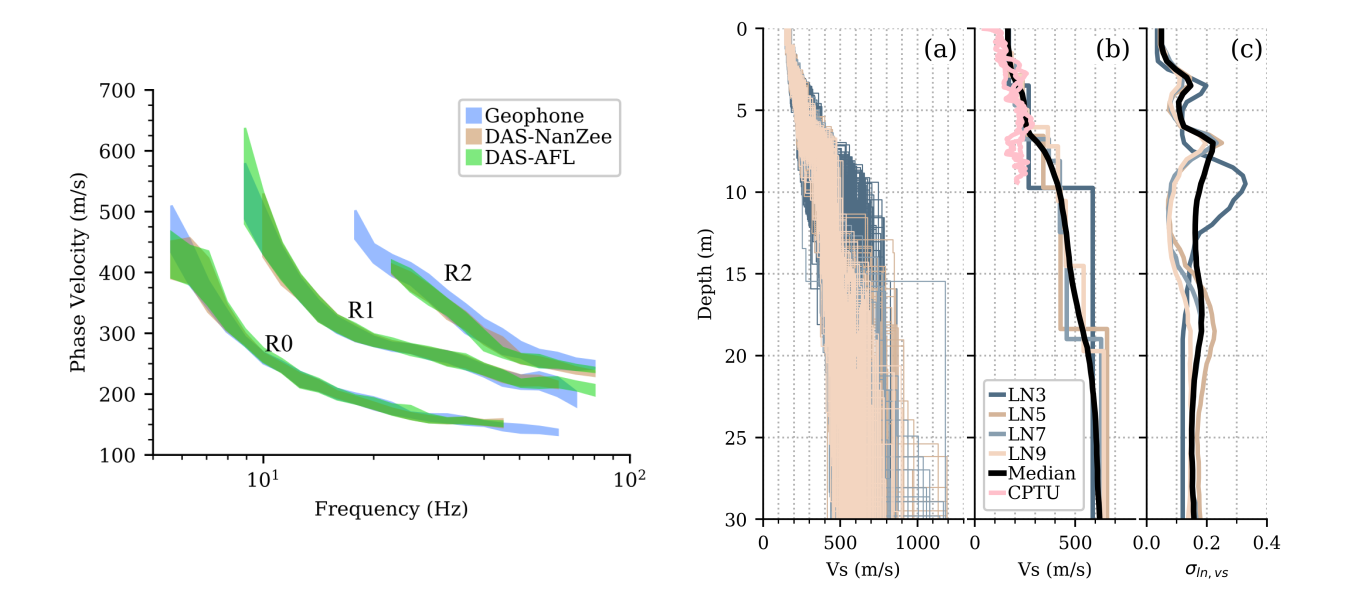
Extracting High-Resolution, Multi-Mode Surface Wave Dispersion Data from Distributed Acoustic Sensing Measurements using the Multichannel Analysis of Surface Waves
Distributed acoustic sensing (DAS) is a rapidly expanding tool to sense wave propagation and system deformations in many engineering applications. In terms of site characterization, DAS presents the ability to make static and dynamic strain measurements at scales (e.g., kilometers) and spatial resolutions (e.g., meters) that were previously unattainable with traditional measurement technologies. In this study, we rigorously assess the potential for extracting high-resolution, multi-mode surface wave dispersion data from DAS measurements using active-source multichannel analysis of surface waves (MASW). We have utilized both highly-controlled, broadband vibroseis shaker trucks and more-variable, narrow-band sledgehammer sources to excite the near surface, and compare the DAS-derived dispersion data obtained from both source types directly with concurrently acquired traditional geophone-derived dispersion data. We find that the differences between the two sensing approaches (i.e., DAS and geophones) are minimal and well within the dispersion uncertainty bounds associated with each individual measurement type when the following conditions are met for DAS: (a) a tight-buffered or strain-sensing fiber-optic cable is used, (b) the cable is buried in a shallow trench to enhance coupling, and (c) short gauge lengths and small channel separations are used. We also show that frequency-dependent normalization of the dispersion image following MASW processing removes the effects of scaling, integration, and differentiation on the measured waveforms, thereby allowing nearly identical dispersion data to be extracted from geophone waveforms (proportional to velocity) and DAS waveforms (proportional to strain) without requiring them to first be converted into equivalent units. We provide evidence that the short wavelength (high frequency) DAS dispersion measurements are limited by both the gauge length and the more commonly considered channel separation. We further show that it is possible to extract essentially equivalent surface wave dispersion data from seismic measurements made using a traditional geophone array or two different DAS cables. Finally, we show that shear wave velocity profiles recovered from the DAS data using an uncertainty-consistent, multi-mode inversion agree favorably with cone penetration tests performed at the site. This study demonstrates that DAS, when appropriate considerations are made, can be used in-lieu of traditional sensors (i.e., geophones) for making high-resolution, multi-mode measurements of surface wave dispersion data using the MASW technique.
